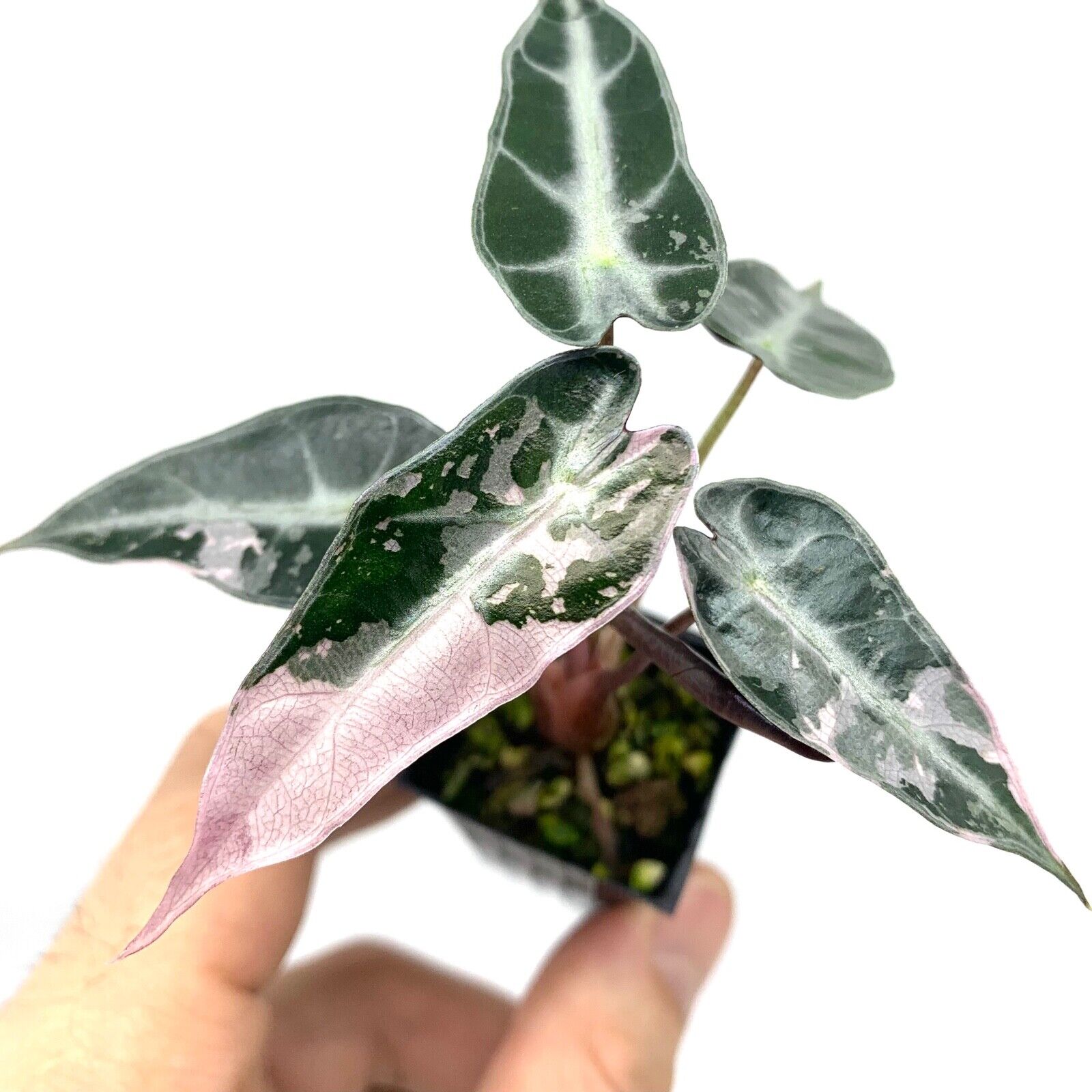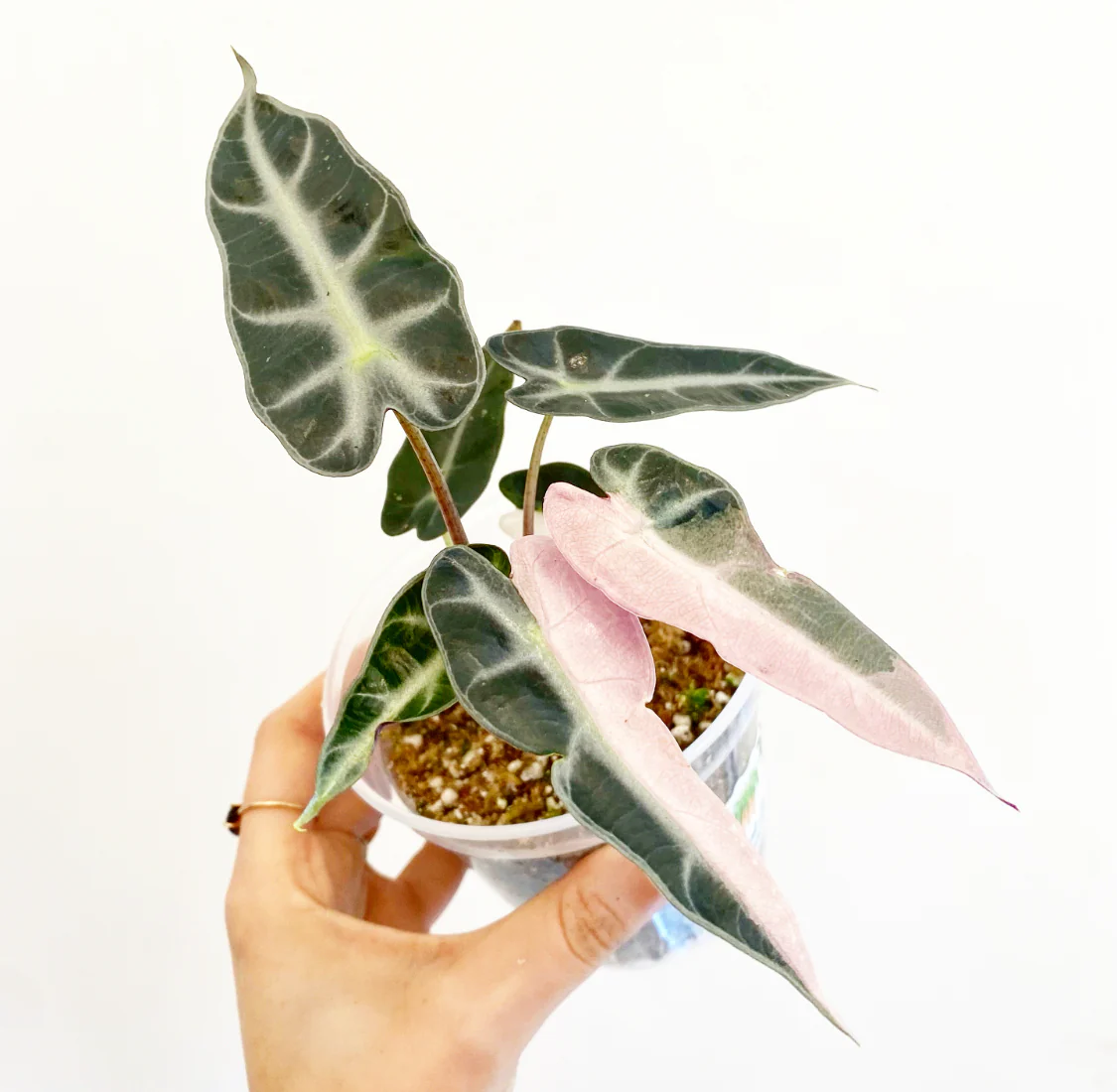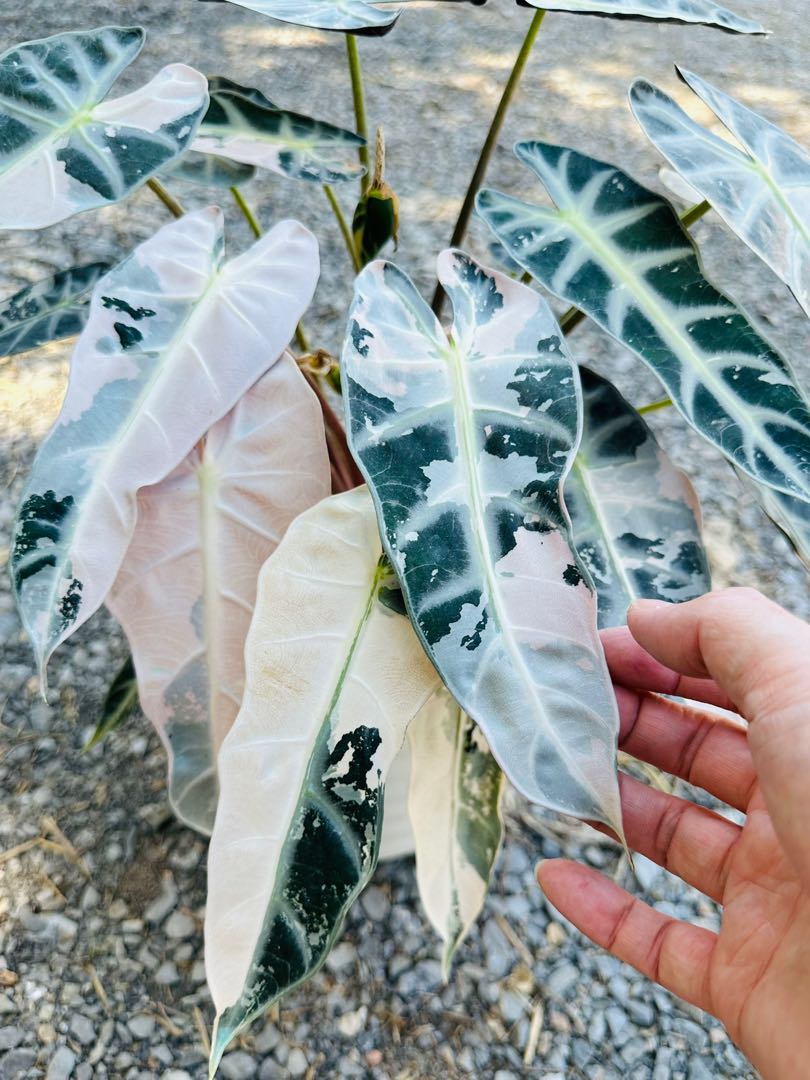Alocasia Bambino Pink Variegated: An Unraveled Beauty
Introduction to Alocasia Bambino Pink Variegated
The world of houseplants is filled with an array of unique and stunning species, but few can rival the allure of the Alocasia Bambino Pink Variegated. This gem of a plant, with its striking foliage and captivating hues, is a visual delight that breathes life into any space.
History and Origin of Alocasia Bambino Pink Variegated
While we're accustomed to seeing these beautiful plants in our living rooms or offices, do you know where they originate? The Alocasia Bambino Pink Variegated hails from the tropical rainforests of Southeast Asia. Its ancestors have adapted to the rich, moisture-laden soils, and dense, shady undergrowth of this region.
For more information on the origins and diversity of Alocasia species, see "5 Must-Know Secrets of Alocasia Plants."

Characteristics of Alocasia Bambino Pink Variegated
Appearance
Known for their dramatic visual appeal, these plants boast stunning variegated leaves with a unique pink hue. Intriguing, right? Let's break this down further.
Leaf structure
Each leaf, or better put, each piece of natural artwork, is deep green with irregular patches of pale pink. The leaves are arrow-shaped, and the texture is akin to a rich velvet fabric, adding a touch of elegance and sophistication.
Growth pattern
The Alocasia Bambino Pink Variegated grows in clumps, with each new leaf emerging from the center and unfolding to reveal its colors. It can reach a height of around 12 inches, making it a perfect fit for your tabletops or shelves.
Root system
This plant has a robust root system that supports the upright growth of its stem and leaves. The roots also store water and nutrients, helping the plant survive in different environmental conditions.

"Discover the rare beauty of the Alocasia Bambino Pink Variegated! Click now to embrace this unique addition to your plant collection."
Caring for Your Alocasia Bambino Pink Variegated
So, how can we ensure these beauties flourish in our care? Let's explore the secrets of keeping a happy and healthy Alocasia Bambino Pink Variegated.
Lighting requirements
Like most tropical plants, this Alocasia prefers bright but indirect light. Harsh, direct sunlight can scorch its beautiful leaves, so it's crucial to find a spot with just the right amount of light.
Watering guidelines
Water your plant thoroughly, allowing the excess to drain off. Wait until the top 1-2 inches of soil feel dry before watering again. Overwatering can lead to root rot – a common plant affliction you want to avoid.
Humidity needs
Coming from a humid environment, the Alocasia Bambino Pink Variegated loves moisture in the air. A regular misting routine or placement in a humid spot like your bathroom would be greatly appreciated by this plant.
Soil composition
A well-draining soil mix is critical to prevent waterlogging and subsequent root diseases. A combination of peat, perlite, and orchid bark works exceptionally well.
Fertilizing procedure
Feed your Alocasia with a balanced houseplant fertilizer every two weeks during the growing season. But remember, less is more. Over-fertilizing can harm your plant.
Repotting recommendations
Repot your Alocasia Bambino Pink Variegated once it outgrows its current pot, or every two years, whichever comes first. This gives the plant more room to grow and renews the nutrient content in the soil.
To learn more about the specific care needs and tips for thriving Alocasia indoors, you might want to read "5 Tips to Grow Alocasia Indoors."
Where to buy Alocasia Bambino Pink Variegated? Benefits from importing plants from Thailand
Shipping: Door to door shipping, fast and safe with Dragon Courier
Biodiversity: Thailand is known for its rich biodiversity, including a wide variety of aroid species. This diversity allows importers to access a broad range of unique and exotic aroid plants.
Quality and Health of Plants: The suitable climate helps the plants grown here stay healthy and of high quality.
Cost-Effectiveness: Due to favorable growing conditions and efficient production methods, Thai aroid plants can often be more cost-effective compared to those from other countries.
Access to Hybrid Varieties: Thai growers are often involved in the development of new hybrid aroid varieties, offering unique plants that may not be available from other sources.
Alocasia species are the most sought after by aroid plant lovers
Propagating Alocasia Bambino Pink Variegated
Division method
The best time to propagate your Alocasia is during repotting. You can gently divide the root ball and plant each section in a new pot. With proper care, these sections will grow into new plants.
Leaf cuttings
Another method is to use leaf cuttings, although this is slightly more complex. A cutting with a visible node or root is needed. Plant this in a pot with well-draining soil and watch your new Alocasia come to life.

Troubleshooting Common Problems
Despite our best efforts, plants can still run into issues. But don't worry, let's identify the most common problems and their solutions.
Yellowing leaves
This could be a sign of overwatering or inadequate light. Assess your care routine and adjust as necessary.
Root rot
Often the result of overwatering or poor soil drainage, root rot can be mitigated by adjusting watering practices and ensuring your plant is in well-draining soil.
Pests
Watch out for common pests like spider mites, mealybugs, or aphids. Use an organic insecticidal soap to tackle these unwelcome visitors.
If you encounter any issues with your Alocasia, additional help can be found in the document "5 Must-Know Tips for Growing Alocasia."
Benefits of Alocasia Bambino Pink Variegated
Now that we know how to care for our plant let's see what it brings to the table.
Aesthetic value
With its stunning colors and unique leaf patterns, this Alocasia is sure to be the star of your indoor plant collection. It can transform any space into a tropical paradise.
Air purification
Like many houseplants, the Alocasia Bambino Pink Variegated is believed to help purify the air, removing toxins and improving indoor air quality.
Boosting mood and productivity
Studies show that having plants around can boost your mood and productivity. It's not just about the beauty; it's about the positive vibes that plants bring.
Conclusion
The Alocasia Bambino Pink Variegated is more than just a houseplant; it's a statement piece. With its brilliant color, striking variegation, and tropical charm, it's a plant that begs to be admired. With a bit of care and love, you can enjoy the delightful presence of this unique plant in your indoor garden.
1. How often should I water my Alocasia Bambino Pink Variegated?
The watering frequency depends on many factors like light, temperature, and humidity. As a rule of thumb, wait until the top 1-2 inches of soil dry out between watering. In a typical indoor setting, this might mean watering once a week.
2. Can the Alocasia Bambino Pink Variegated grow in low light?
The Alocasia Bambino Pink Variegated prefers bright, indirect light. It can tolerate lower light conditions for a while, but its growth may slow down, and the leaf variegation may fade. So, it's best to place it in a well-lit spot, but away from direct sunlight.
3. Why are the leaves on my Alocasia turning yellow?
Yellow leaves can be a sign of various issues such as overwatering, underwatering, or not enough light. Check your plant care routine. If the plant is overwatered, allow the soil to dry out before watering again. If it's not getting enough light, move it to a brighter location.
4. How can I propagate my Alocasia Bambino Pink Variegated?
You can propagate this plant by division or leaf cuttings. The division method involves separating a part of the plant with roots during repotting and planting it in a new pot. Leaf cuttings require a bit more care. You need a healthy leaf with a visible node or root. Plant this in a pot with well-draining soil and maintain a warm, humid environment to encourage root growth.
5. What are some common pests that affect the Alocasia Bambino Pink Variegated?
The Alocasia Bambino Pink Variegated can be affected by common houseplant pests such as spider mites, mealybugs, and aphids. If you notice signs of pests, treat the plant with an organic insecticidal soap or neem oil, and isolate it from other plants to prevent the pests from spreading.
https://greenboog.com/unraveling-beauty-alocasia-bambino-pink-variegated/
Nhận xét
Đăng nhận xét